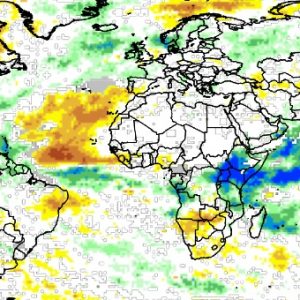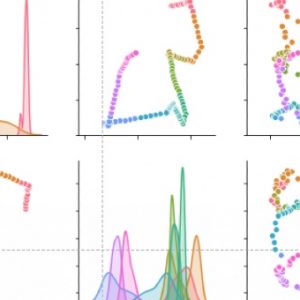Results for 'forecasts'
Found 522 results.
2020 January Quick Look
SSTs in the east-central Pacific were near the borderline of weak El Niño levels during mid-January. Patterns in atmospheric variables have mainly maintained neutral conditions, with some trends toward El Niño. Most model forecasts favor borderline weak El Niño SST conditions during winter, returning to ENSO-neutral by early spring and beyond. The official CPC/IRI outlook is consistent with these model forecasts.
December Climate Briefing: Neutral ENSO Conditions Favored
Read our ENSO Essentials & Impacts pages for more about El Niño and La Niña. Ángel G. Muñoz provides the briefing summary: What’s New See below for tweets summarizing the current El Niño situation. ENSO Forecasts To predict ENSO conditions, computers model the SSTs in the Niño3.4 region over the next several months. The plume graph below shows the outputs […]
2019 December Quick Look
SSTs in the east-central Pacific were neutral, but near the borderline of weak El Niño levels during mid-December. Patterns in most atmospheric variables have maintained neutral conditions. Most model forecasts favor warm-neutral to borderline weak El Niño SST conditions during early winter, returning to ENSO-neutral from late winter to spring and even early summer. The official CPC/IRI outlook is consistent with these model forecasts.
Ángel Muñoz receives US CLIVAR Early-Career Award
IRI climate scientist Ángel Muñoz has been given an Early Career Scientist Leadership Award by the U.S. Climate Variability and Predictability Program (US CLIVAR) for ‘outstanding contributions to national and international work to advance research and applications of subseasonal-to-seasonal predictions’. US CLIVAR is a national program that coordinates and advances climate prediction research in the […]

IRI@AGU: Crossing the ‘Predictability Desert’
Until recently, predicting rainfall and temperature at the subseasonal timescale (i.e. between two weeks and three months) was considered impossible. That’s beginning to change, thanks to the efforts of IRI’s Andrew Robertson, the head of IRI’s climate group and co-chair of the steering group of the Subseasonal to Seasonal (S2S) Prediction Project. In the Q&A […]

IRI@AGU: Subseasonal Forecasting for the Indian Monsoon
Climate scientist Nachiketa Acharya is at the center of IRI’s efforts to develop a new seasonal forecasting system. He focuses on improving the skill and usability of climate forecasts for users in agriculture, water management and other sectors. Acharya is also actively involved in improving forecasting at the subseasonal scale. Recently, he and other IRI […]

IRI@AGU: Schedule of Events 2019
A range of IRI’s areas of expertise will be represented at this year’s annual meeting of the American Geophysical Union (AGU). Below is the schedule of IRI’s posters and presentations in sequential order. SUNDAY, DECEMBER 8 World Climate Research Programme 40th Anniversary Symposium Lisa Goddard WCRP is celebrating its 40th year of international climate science. We […]

IRI@AGU: Can We Predict “Climate Migrations”?
IRI scientists Ángel Muñoz and Diego Pons are interested in better understanding the root causes of migration in Central America. With their Columbia colleagues, Alex de Sherbinin and Susana Adamo–from the Center for International Earth Science Information Network (CEISIN)–and Diana Giraldo from the University of Reading, they’ve developed a prototype model that considers climate and […]
November Climate Briefing: El Niño Still Hanging By a Thread
Read our ENSO Essentials & Impacts pages for more about El Niño and La Niña. Weston Anderson provides the briefing summary: What’s New See below for tweets summarizing the current El Niño situation. ENSO Forecasts To predict ENSO conditions, computers model the SSTs in the Niño3.4 region over the next several months. The plume graph below shows the outputs of […]
2019 November Quick Look
SSTs in the east-central Pacific were near thresholds of weak El Niño levels during October and early November. However, patterns in most atmospheric variables generally maintained neutral conditions. The oceanic warming is attributed to intraseasonal variability, and the overall diagnosis indicates ENSO-neutral conditions. Most model forecasts favor ENSO-neutral through winter and spring, with slightly higher chances for El Niño than La Niña. The official CPC/IRI outlook is consistent with these model forecasts.

You must be logged in to post a comment.